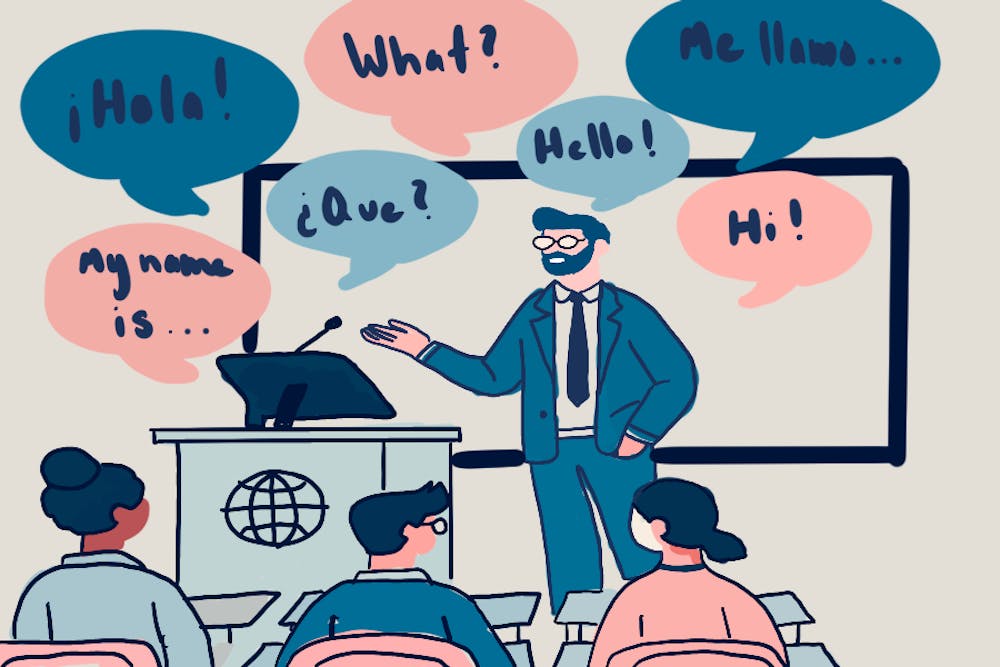ASU is known for its diverse academic community, but for professors who speak English with a non-native accent, the classroom can sometimes feel like a challenging place. While they bring valuable expertise and unique perspectives, these professors often encounter barriers that their American counterparts do not usually face.
"I think there are degrees and degrees of communication, right? And it depends also on the topic that somebody teaches," said Aurel Coza, professor of practice for Corporate Engagement & Strategic Partnerships. He is originally from Romania.
The complexity of the subject matter can influence how well students grasp the material during a lecture, especially when accents are involved.
"When I started first teaching at Northwestern as a postdoc ... it was more challenging to get ideas across in large classrooms. Students just wouldn't understand what I'm saying," said Yulia Peet, associate professor in the School for Engineering of Matter, Transport and Energy. Peet is originally from Russia.
Feedback from students reflects these communication challenges, even though the challenges can't be blamed on the professor.
"I've seen some students when they give evaluations, sometimes they're unhappy because of the accent ... It's definitely more challenging for international professors to keep up with that," Peet said.
While students rarely voice concerns directly, there are occasional hints of misunderstanding.
"I have some gentle reminders from the students that they couldn't understand few things here and there when I'm lecturing in the classroom, but not major concerns about students. Maybe because students don't want to upset me," said Christos Katsanos, an associate professor in the School of Life Sciences. He is originally from Greece.
Both Katsanos and Peet have found that modifying their lecture styles can help.
"I had to learn some techniques to speak slow and repeat more things to make sure they understand. So from a teaching perspective, yes, there are some challenges," Peet said.
Despite making adjustments, professors still receive feedback about their accents, even if they can't do anything more to change it.
"Doesn't happen all the time, but they do mention my thick accent (sometimes). But they don't mention it as a concern ... I haven't seen that this has been an issue with the students, although they do mention it," Katsanos said.
Peet said that the communication challenges are not only at the beginning of a career, they can stay many years in the field.
"Maybe some words I said were perceived as Russian, but ... I've been so worn (down) that I don't even think in Russian any more," Peet said. "There's not much I can do to improve it. Because I guess I can invest a lot of time, but it's been 25 years."
Despite the challenges, many international professors maintain empathy and are understanding toward their students.
"A little sad to see that because I try to look at things from their perspective. It's not their fault that they have trouble understanding me, just like it's not my fault that I have an accent," Peet said.
On the other hand, having an accent as an international professor can be an asset, helping them connect with students from diverse backgrounds.
"Actually what I found is that (students) feel like they can relate to me a little bit better because they are not intimidated by somebody that's rambling and (I'm not) using all sorts of sophisticated expressions or slang," Coza said.
Coza believes that effective communication goes beyond accents.
"The accent never goes away, but the communication is not entirely dependent on the accent, it's on how you actually communicate, and if you communicate clearly," Coza said.
In technical subjects, communication can be more straightforward due to the use of visual aids.
"In engineering, you put an equation on the board, or if you're talking about a device, or whatever you're talking about. It's relatively easier to communicate," Coza said.
Ultimately, there are limited actions that can be taken, but accents may never completely fade, and this reality should be met with both respect and understanding.
While accents may present challenges, ultimately, one in five American residents speak a language other than English at home, according to the U.S. Census. Accents are incorporated into every part of social life, including college.
"There are so many people with different accents, I think pretty much everyone is used to different accents, so it's not a problem," Peet said.
Professors and faculty with accents continue to enrich ASU's academic community. Through their dedication, empathy and adaptability, they build meaningful connections with their students and highlight the value of diversity.
Edited by Sophia Ramirez, Abigail Beck and Natalia Jarrett.
Reach the reporter at dmanatou@asu.edu.
Like The State Press on Facebook and follow @statepress on X.
Dimitra is a junior studying biomedical engineering and physics. This is her second semester with The State Press. She has also worked as a research assistant in Kirian Lab.




